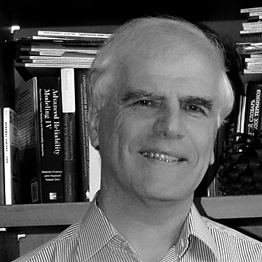|
 |
| Prof Maxim (MS) Finkelstein’s |
The Russian professor first visited our university in 1993 and loved the environment. For the last 15 years we were fortunate to have had a man of Prof Maxim (MS) Finkelstein’s (65) stature as part of our Department of Mathematical Statistics.
“I like the atmosphere, the environment and the people of the UFS,” says Prof Finkelstein. “The UFS is a real campus, not part of the city as a lot of other universities in South Africa.”
Prof Finkelstein completed his MSc in Mathematical Physics from the Leningrad State University in the USSR in 1971. Maths and Physics have been a passion of his since a young age. In 1979, Prof Finkelstein completed his PhD in Mathematical Theory of Reliability at Leningrad Elektropribor Institute. Before his career at our university, Prof Finkelstein was a Senior Researcher at St. Petersburg Elektropribor Institute and an Associate Professor at Leningrad Technological Institute.
His long list of publications includes over 170 papers and five books. His monograph Failure Rate Modelling for Reliability and Risk was published by Springer in 2008. More recently another monograph – which was co-authored with JH Cha – was published by Springer in April 2013 and is called Stochastic Modelling for Reliability: Shocks, Burn-in, and Heterogeneous Populations.
Prof Finkelstein’s research interests include mathematical theory of reliability, survival analysis, risk and safety modelling, stochastic processes and stochastics in demography. When asked about leisure and life outside of research, the devoted academic’s response was as follows…
“To have publications, you have to work all the time. I work half of Saturdays and most of Sundays,” Prof Finkelstein says. “I spend three months a year in Russia and Germany – mostly during the European summer – for my research.”
“But apart from that, I like reading – classical Russian authors mostly. I swim in the UFS’s swimming pool almost every day and I play tennis as well.”